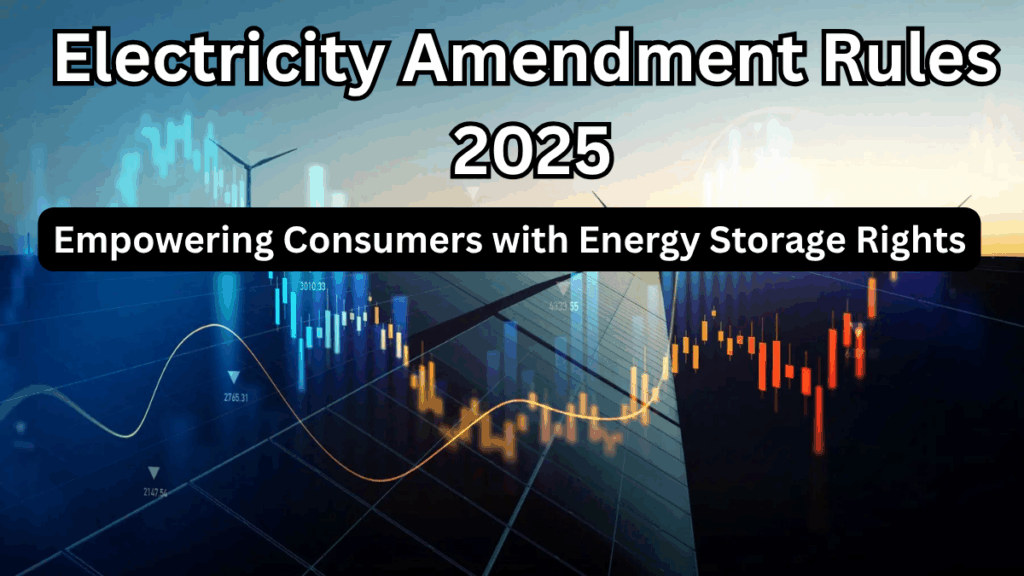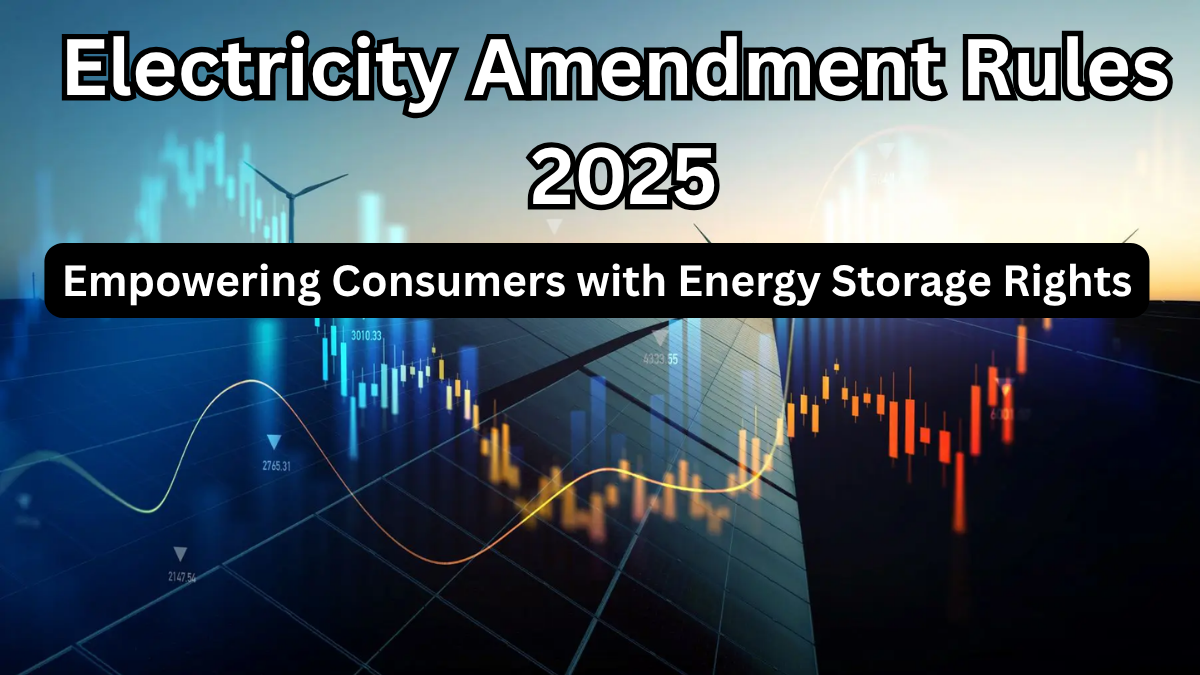The Draft Electricity Amendment Rules 2025 India bring a significant shift in how consumers interact with energy systems. These amendments focus on consumer energy storage rights, giving individuals and businesses more control over their energy usage and contributions to the grid.
Let’s break down what these rules mean for everyday consumers and how they aim to transform the power sector in India.

What Are the Draft Electricity Amendment Rules 2025 India?
The Draft Electricity Amendment Rules 2025 India aim to make the electricity sector more consumer-friendly and future-ready. One of the key highlights is the right of consumers to install and operate energy storage systems.
These rules also simplify participation in renewable energy programs, making it easier for households, industries, and commercial establishments to generate, store, and trade power.
Why Are Consumer Energy Storage Rights Important?
Energy storage is no longer just for large power plants. With these amendments:
-
Consumers can install energy storage (like batteries) to store excess energy from solar or other sources
-
Reduced electricity bills through peak-hour usage of stored power
-
Backup power availability during outages
-
Opportunities for power trading – selling surplus stored energy back to the grid
This is a major step towards energy independence for individuals and organizations.
Key Provisions in the Draft Electricity Amendment Rules 2025 India
Here’s a quick overview of what’s changing:
| Provision | Impact on Consumers |
|---|---|
| Right to Energy Storage | Consumers can install storage systems without prior approval (subject to safety norms). |
| Grid Connectivity | Simplified connection process for those using storage and renewable sources. |
| Energy Trading | Allows consumers to trade surplus energy with distribution companies or peers. |
| Reduced Compliance Burden | Streamlined procedures for residential and small commercial consumers. |
How Will This Benefit Consumers?
With these rules in place, consumer energy storage rights are now legally recognized. Here’s how it helps:
-
Cost savings by storing cheap off-peak energy for use during expensive peak hours
-
Better grid stability as stored energy can be supplied back when needed
-
Empowered consumers who can actively participate in the energy market
-
Boost to renewable adoption with integrated storage solutions
The Road Ahead
These changes represent a shift from consumers being mere electricity users to becoming active participants in energy production and management. The Draft Electricity Amendment Rules 2025 India also align with India’s goal of increasing renewable energy adoption and making the power sector more resilient.
FAQs
1. What do the Draft Electricity Amendment Rules 2025 India mean for households?
They allow households to install energy storage systems (like batteries) and use stored energy during peak hours or outages, reducing dependency on the grid.
2. Can I sell stored energy back to the grid?
Yes. These rules enable consumers to trade surplus energy with distribution companies or other consumers under approved mechanisms.
3. Do I need prior approval to set up energy storage?
No. Under the new rules, small-scale energy storage installations do not require prior approval, making the process hassle-free.
4. How does this support renewable energy adoption?
By enabling storage, consumers can store excess renewable energy (like solar) and use or sell it later, increasing overall renewable utilization.
Click here to learn more
